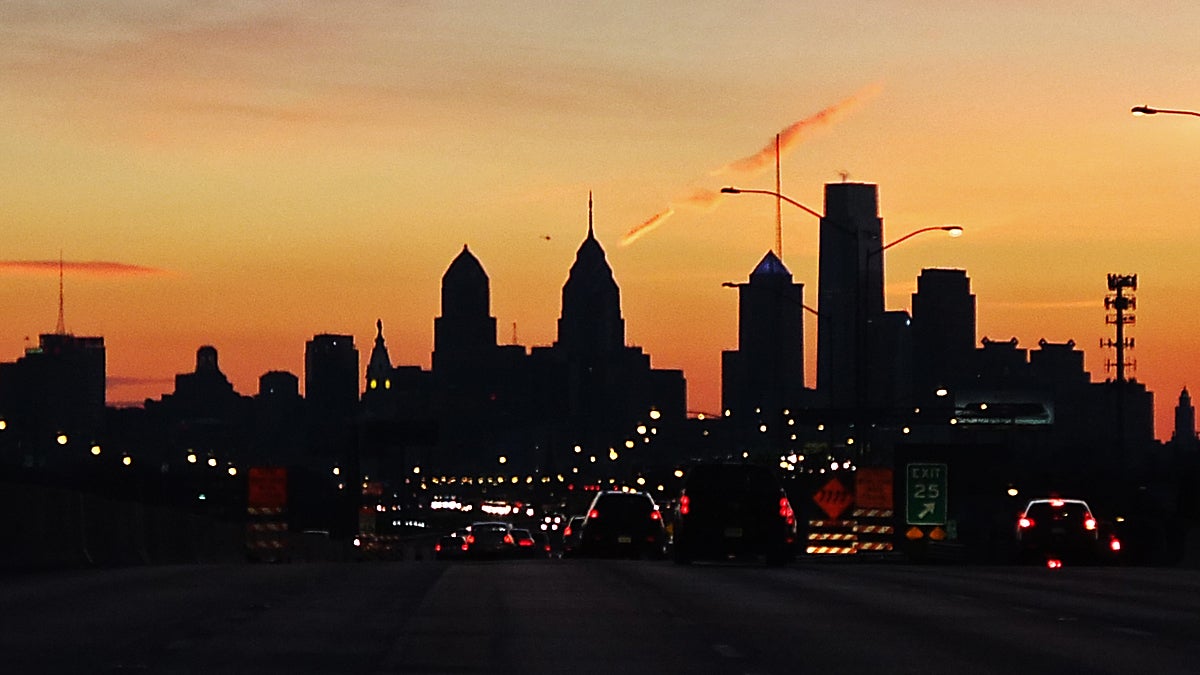Philadelphia home to 50,000 unauthorized immigrations, says Pew report
Listen
The Philadelphia skyline. (Alan Tu/WHYY)
Philadelphia’s population declined steadily in the latter half of the 20th century. New foreign born residents are credited with helping to halt that trend over the last 10 years.
As the debate over immigration in the United States intensifies, new numbers shed light on just how many of the city’s immigrants are unauthorized.
“Philadelphia has about 50,000 unauthorized immigrants, that’s about one in four foreign-born residents,” said Tom Ginsberg, project manager with the Pew Charitable Trusts Philadelphia Research Initiative.
For the entire region — including Southeastern Pennsylvania, southern New Jersey and Northern Delaware — the unauthorized immigrants number around 160,000. The Pew Research Center, a sister organization to the Philadelphia Research Initiative, pulled from the U.S. Census Bureau’s 2014 American Community Survey, the most recent set available.
“To arrive at its estimates of the unauthorized immigrant population, the center first generated a total of lawful immigrants, using data from the U.S. Census Bureau’s American Community Survey and the Department of Homeland Security,” according to the Philadelphia Research Initiative’s release. “The lawful-immigrant population then was subtracted from the total number of U.S. immigrant residents, and the remaining people were assumed to be unauthorized immigrants, a method known as ‘residual’ estimation.”
Ginsberg’s team then reframed national data to compare Philadelphia to other major northeastern cities. Compared to New York, Boston, Washington, D.C., and Baltimore, Philadelphia fell second in terms of the total number of unauthorized immigrants, although it was far below New York City, which has the highest number of authorized immigrants at 525,000.
Neither Pew entity takes a stance on immigration policy, preferring to work as an impartial source of sound data, or as they call it, a “fact tank.” But immigration, both legal and unauthorized has figured largely in the campaign rhetoric and early policy proclamations by President Donald Trump.
Executive orders halting travel from seven predominantly Muslim countries, as well as one to fund a border wall between the U.S. and Mexico, will impact areas where immigrants are concentrated. Philadelphia, a so-called “sanctuary city,” which does not honor Immigration and Customs’ Enforcement requests to detain unauthorized immigrants without a warrant, stands to lose funding if bills in both the state and federal legislature penalizing sanctuary cities are passed.
Unauthorized immigrants settle in large cities in disproportionate numbers, according to the report. Philadelphia is home to 28 percent of the state’s unauthorized residents, while only home to 12 percent of its total population. That echoes nationally — 61 percent of the nation’s unauthorized immigrants are concentrated in 20 cities.
While Pew doesn’t have good data how people arrive in the U.S., many enter lawfully, said senior demographer with Pew Research Center, Jeff Passel.
“We think 40 to 50 percent are visa overstayers, meaning they came to the U.S. legally and stayed beyond the terms of admission,” he said, which could mean a business, student, guest worker or tourist visa.
Nationally, the study shows the total number of unauthorized immigrants has been relatively stable, hovering between 11 million and 12 million during the last decade. But while cities remain the largest hubs, populations have shifted. Unauthorized immigrants are now spreading out to more corners of the country, rather than concentrated in a handful of states, such as California, Texas and New Jersey, according to the report.
WHYY is your source for fact-based, in-depth journalism and information. As a nonprofit organization, we rely on financial support from readers like you. Please give today.

